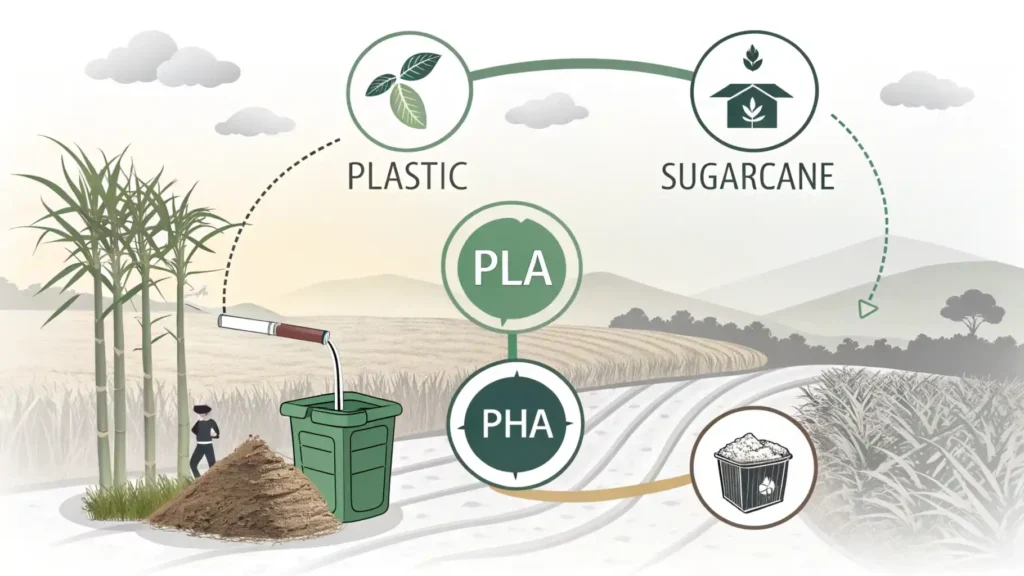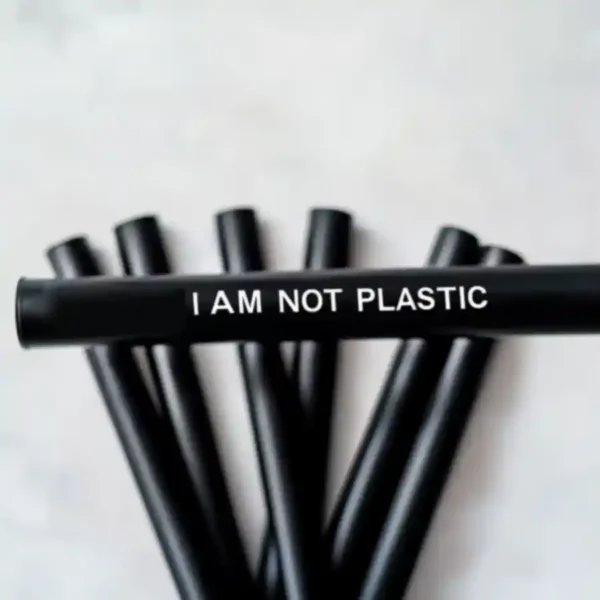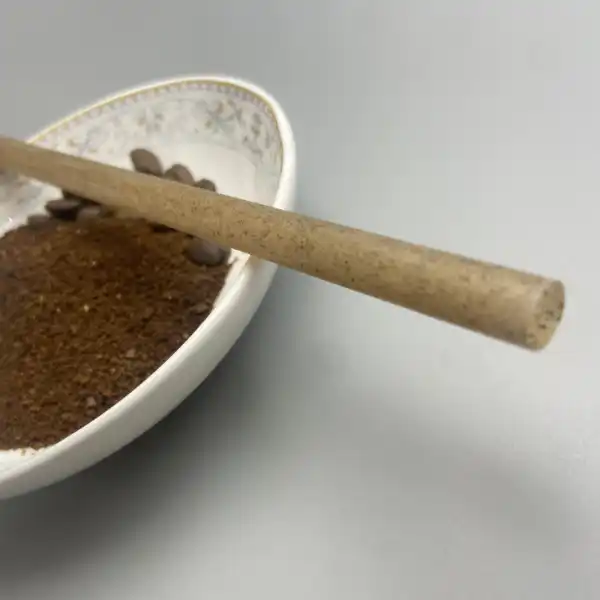
Every day, millions of plastic straws are used and discarded, contributing significantly to environmental pollution. This single-use item, often used for mere minutes, poses a long-term threat to our planet. Fortunately, a shift toward eco-friendly alternatives like biodegradable and compostable straws is gaining momentum. This comprehensive guide explores the various types of sustainable straws, their benefits, and how to make informed choices that support a healthier planet.
Why Plastic Straws Are a Problem
Plastic straws are typically made from petroleum-based materials and can take centuries to break down. They clog landfills, endanger marine wildlife, and eventually disintegrate into microplastics that contaminate water sources and even human food chains. According to a study by the American Chemical Society, “biodegradable” straws can still take many months to break down fully in the ocean, emphasizing the magnitude of the plastic pollution crisis.
Key Issues with Plastic Straws
- Slow Decomposition: They linger in landfills, the ocean, and other natural habitats for decades or centuries.
- Wildlife Impact: Marine animals mistake plastic fragments for food, causing injuries or death.
- Microplastics: As they degrade, plastic straws add to the ever-increasing microplastic pollution in our ecosystems.
Understanding Biodegradable, Compostable, and Marine-Degradable
Straw labels can be confusing. Terms like “biodegradable,” “compostable,” and “marine-degradable” are often used interchangeably, though they don’t mean the same thing:
- Biodegradable: Breaks down over time through natural processes, but may take years and often requires specific conditions.
- Compostable: Decomposes into nutrient-rich soil under certain conditions, such as in an industrial or home composting environment.
- Marine-Degradable: Specifically formulated to break down in saltwater, reducing harm to marine life. However, it’s still preferable to dispose of these products properly rather than relying on ocean degradation.
If you’re interested in a deeper dive, Sugarcane Straw explains how “biodegradable” and “compostable” can differ in their requirements and timelines.
Types of Biodegradable and Compostable Straws

1. PHA (Polyhydroxyalkanoates)
PHA straws are made from renewable resources (e.g., plant oils, microbes) and are often both industrially and home-compostable. They also tend to be marine-degradable, making them a strong candidate for eco-conscious consumers.
2. PLA (Polylactic Acid)
PLA is derived from plant starches like corn or sugarcane but behaves much like traditional plastic. It usually requires high-heat industrial composting to break down, meaning it’s not universally compostable. For more insight on its downsides, see Roc Paper Straws’ discussion。
3. Paper Straws
Paper straws decompose faster than plastics but can become soggy and may contain chemicals like PFAS. Production can also be energy-intensive, and not all paper straws are easily recyclable or compostable.
4. Sugarcane Straws
Sugarcane straws come from bagasse—a byproduct of sugarcane processing—and are popular for their durability and compostability. For example, you can check out Nature Bio Eco’s wrapped smoothie sugarcane straw if you’re looking for a home-compostable option.
5. Coffee Grounds Straws
Straws made from coffee grounds offer a second life for coffee waste, reducing reliance on virgin materials. They’re typically free of harsh chemicals and suitable for composting. One option is Nature Bio Eco’s boba coffee grounds straw (12mm x 210mm), designed to withstand thicker beverages while remaining eco-friendly.
6. Bamboo and Agave
Other plant-based options include bamboo (fast-growing, reusable, and compostable) and agave (upcycled waste fibers from tequila production). Both can decompose more quickly than petroleum-based plastics.
Making the Right Choice

Consider the following:
- Disposal Method
- Can you compost at home?
- Is industrial composting available locally?
- Beverage Type
- Hot vs. cold drinks? (Some straws can’t handle high heat.)
- Thick smoothies vs. lighter cocktails?
- 材料
- Avoid “compostable” claims without third-party certifications.
- Cost and Availability
- Sustainable straws may be pricier, but prices are dropping as adoption grows.
- Longevity and User Experience
- Reusable straws like bamboo or stainless steel may be best for frequent straw users.
- Single-use? Look for verified compostable または marine-degradable。
To learn more about how compostable materials help combat plastic waste, check out EcoSoul’s “5 Reasons To Choose Compostable Straws Over Plastic Straws” for additional perspective on the environmental benefits.
Tips for Businesses and Consumers
- For Businesses
- Educate Staff & Customers: Provide clear signage and instructions on disposal.
- Test Multiple Options: Offer different straw types (e.g., sugarcane vs. coffee grounds) to find a balance of cost and performance.
- Market Your Efforts: Let your patrons know you’re switching to eco-friendly alternatives as part of your sustainability pledge.
- For Consumers
- Skip the Straw: If a straw isn’t necessary, forgo it entirely.
- Choose Reusable: Metal, silicone, or glass straws can dramatically cut waste over time.
- Dispose Responsibly: If using compostable straws, ensure they go into the proper composting stream. In many places, a standard trash bin means it may not break down as intended.
Putting It All Together

Making the switch from plastic to more eco-friendly straw alternatives is a tangible step in fighting pollution and protecting our oceans. However, it’s important to remember that no single material is a cure-all. Reduce overall consumption and dispose of your straws properly to maximize environmental benefits. If you’re curious about the lifecycle of different biodegradable options, ScienceDirect’s research overview breaks down challenges, performance, and broader implications of each straw type.
Frequently Asked Questions (FAQ)
- What’s the main difference between biodegradable and compostable straws?
- Biodegradable straws eventually break down under natural conditions but may still leave microplastics. Compostable straws are designed to fully decompose into nutrient-rich matter, typically in a composting facility.
- Are paper straws always better than plastic?
- They decompose faster but can be soggy, contain chemicals, and aren’t always recyclable. Still, they generally have a lower long-term environmental impact than plastic.
- Do PLA straws really help the environment?
- PLA straws can be misleading; they often need industrial composting conditions to fully break down. Without these conditions, they can behave similarly to traditional plastic.
- What’s the difference between home-compostable and industrial-compostable straws?
- Home-compostable straws break down in backyard compost bins, while industrial-compostable straws require the higher temperatures and controlled conditions found at commercial composting facilities.
- How quickly do sugarcane or coffee grounds straws decompose?
- Under optimal conditions, they can break down in a matter of weeks or months. Actual decomposition time depends on temperature, moisture, and the presence of composting microbes.
- Is marine-degradable the same as throwing a straw in the ocean?
- Not exactly. Marine-degradable means it won’t harm the ocean long-term if it ends up there. However, proper disposal in compost or waste facilities is still best practice.
- Where can I find reliable compostable straws?
- Look for vendors that hold reputable certifications (e.g., BPI, TÜV AUSTRIA). You can also explore Nature Bio Eco’s sugarcane straws for an eco-friendly option.
By choosing compostable or biodegradable straws—and, whenever possible, reducing or eliminating the need for straws altogether—you can play a role in fostering a cleaner planet for future generations.







